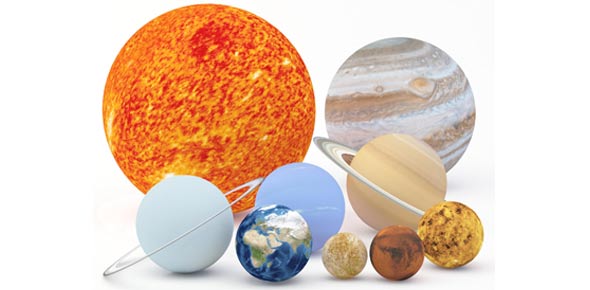Science Trivia
Ready to put your knowledge to the test? Challenge yourself with these fun trivia questions and see how much you truly know! Keep track of your score and see if you can ace them all!
You might enjoy exploring these engaging Science Quizzes!
Top Trending Trivia
Questions: 14 | Viewed: 338534 | Last updated: Nov 20, 2025
- 1. What group of stars is the sun classified in?
- 2. Which scientist used one of the first telescopes to observe planets and stars?
- 3. What are animals called that only consume other animals?
Questions: 107 | Viewed: 46987 | Last updated: Nov 20, 2025
- 1. How many colors are in a rainbow?
- 2. What is the approximate total number of genes, that we humans possess?
- 3. How many planets are in the solar system?
Questions: 14 | Viewed: 33691 | Last updated: Nov 19, 2025
- 1. What is the name of the hard rock that forms from loose volcanic ash cemented together?
- 2. What natural phenomenon is characterized by the eruption of super hot water and steam from bedrock?
- 3. Arcturus is an orange star with a surface temperature of 4,200 degrees Celsius. How far is it from the Sun?
Popular Topics
Science Trivia Questions
A rainbow typically has seven colors. These colors are: Red Orange Yellow Green Blue Indigo Violet These colors are often remembered by the acronym ROYGBIV, which stands for Red, Orange, Yellow, Green, Blue, Indigo, and Violet. Rainbows form when sunlight is refracted, dispersed, and reflected by water droplets in the atmosphere, creating this spectrum of colors.
Humans possess approximately 20 thousand genes. Genes are segments of DNA that contain instructions for building proteins, which are essential for the structure and function of our bodies. These genes determine our physical traits, susceptibility to diseases, and other biological characteristics. The Human Genome Project, completed in 2003, estimated that humans have around 20,000 to 25,000 genes. This number is significantly smaller than initially anticipated, but ongoing research continues to refine our understanding of the human genome.
The correct answer is eight because after the reclassification of Pluto as a dwarf planet in 2006, there are currently eight recognized planets in the solar system. These planets include Mercury, Venus, Earth, Mars, Jupiter, Saturn, Uranus, and Neptune.
According to the United Nations estimate, the global population is estimated to be around 8 billion people.
Rheumatic fever is not one of the risks of smoking tobacco. Smoking tobacco is associated with various health risks such as coronary heart disease, emphysema, increased incidence of stillbirths and low-weight babies, and cancer of the bladder and pancreas. However, rheumatic fever is not directly linked to smoking tobacco. Rheumatic fever is an inflammatory disease that can occur after a streptococcal infection, particularly in children.
Slate is not an example of a mineral because it is a metamorphic rock, not a naturally occurring inorganic solid with a specific chemical composition and a crystalline structure. Quartz, calcite, gypsum, and mica are all examples of minerals as they meet the criteria of being naturally occurring, inorganic, solid substances with a specific chemical composition and a crystalline structure. Corundum is also a mineral, so it is not the correct answer.
This process occurs primarily in the cores of stars, where hydrogen atoms fuse to form helium and progressively heavier elements through nuclear fusion reactions. Elements up to iron are typically formed in stars through these processes. Elements heavier than iron are often formed during supernova explosions (option c), where the intense energy and pressure facilitate the creation of heavier elements through nucleosynthesis.
Mercury is the planet closest to the Sun, and its orbit is located between the Sun and Earth. Therefore, it can never be seen directly overhead at midnight because it is always in close proximity to the Sun in the sky.
Being composed of cells is characteristic of all living things. Cells are the basic structural and functional units of life. They are responsible for carrying out essential processes such as metabolism, growth, reproduction, and response to stimuli. All living organisms, from the simplest bacteria to complex multicellular organisms, are composed of cells. Cells provide the necessary framework for life and allow for the organization and specialization of different tissues and organs. Therefore, the presence of cells is a fundamental characteristic of all living things.
Nitrogen is the most abundant gas in the Earth's atmosphere, making up about 78% of the air by volume. It plays a critical role in the biosphere and in the chemical processes necessary for life. Oxygen, while essential for combustion and respiration, makes up about 21%, and other gases such as carbon dioxide and argon make up the remainder. Understanding the composition of the atmosphere is essential for fields ranging from environmental science to engineering and health.
Conduction is the process by which energy travels from a warm substance to a colder substance. This occurs through direct contact between the particles of the two substances, where the faster-moving particles transfer their energy to the slower-moving particles. Unlike convection, which involves the movement of a fluid, or radiation, which involves the transfer of energy through electromagnetic waves, conduction relies on physical contact for energy transfer. Absorption, on the other hand, refers to the process of taking in or assimilating energy, rather than transferring it between substances.
While many rocks contain crystals, "crystalline" is not a fundamental rock classification. The three main types of rocks are igneous, metamorphic, and sedimentary. Igneous rocks are formed from cooled magma or lava. Metamorphic rocks are formed when existing rocks are changed by heat, pressure, or chemical reactions. Sedimentary rocks are formed from the accumulation and cementation of sediments.
The sun is never directly overhead in Roanoke, Virginia or New York City. This is because these cities are located north of the Tropic of Cancer, which means that the sun's rays never reach a point directly overhead. The sun is only directly overhead at locations between the Tropic of Cancer and the Tropic of Capricorn.
The answer "an explanation which is well established" is correct because Darwin's theory of evolution by natural selection is a widely accepted and extensively supported scientific explanation for the diversity of life on Earth. It is based on a vast amount of evidence from various fields of study, including paleontology, genetics, and comparative anatomy. The theory has been tested and validated over time, and it continues to be a fundamental concept in the field of biology.
Technetium (Tc) is the first element that was created synthetically and is not found naturally on Earth in any significant amounts. Unlike uranium and plutonium, which can be found in trace amounts in nature, and radon, which occurs naturally as a radioactive gas, technetium is produced in nuclear reactors and is primarily used in medical diagnostics.
The uvula is found in the back of the throat, specifically in the soft palate region. It is a small, fleshy extension hanging down from the soft palate and plays a role in speech articulation and preventing food from entering the nasal cavity during swallowing.
Hair is a unique body covering to mammals because it is a defining characteristic that sets them apart from other animals. Hair serves various functions such as insulation, protection, sensory perception, and camouflage. It is made of keratin, a protein that is also found in nails and hooves. The presence of hair is a key feature used to classify an animal as a mammal, making it a distinguishing trait of this particular group of animals.
Paleontologists study fossils and remnants of ancient life forms to understand the history of life on Earth. By examining these remains, paleontologists can reconstruct past environments, study evolutionary processes, and gain insights into the diversity of life that existed in the past. Their work helps us understand the origins and development of different species and ecosystems over millions of years.
Ornithology is the study of birds, including their behavior, physiology, and ecology. This field of study focuses specifically on birds and their unique characteristics, making it the correct answer for a question about a study related to birds.
The femur is the longest bone in the human body, measuring approximately one-quarter of a person's height. It is located in the thigh and is crucial for supporting the body's weight and facilitating movement. The femur also plays a vital role in protecting the delicate tissues and organs in the lower body.
The human heart is composed of four chambers - two atria and two ventricles. The atria receive blood from the body and lungs, while the ventricles pump blood out to the body and lungs. This four-chambered structure allows for efficient circulation of oxygenated and deoxygenated blood throughout the body.
Evolution is the correct answer because it refers to the scientific theory that explains how living organisms change and adapt over time through genetic mutations and natural selection. This process leads to the diversity of species we see today and is supported by a vast amount of evidence from various scientific fields such as genetics, paleontology, and comparative anatomy.
Molars are the teeth located at the back of the mouth that are used for grinding and chewing food. They have a large, flat surface area with multiple cusps that help break down food into smaller pieces, making it easier to swallow and digest. The molars play a crucial role in the chewing process by crushing and grinding food particles before they are swallowed.
Blue eyes are the most light-sensitive because they have less melanin in the iris, allowing more light to pass through and reach the retina. This increased sensitivity to light can sometimes cause people with blue eyes to experience more discomfort in bright light or sunlight compared to those with darker eye colors.
The proper anatomical name for the collar bone is clavicle. The clavicle is a long bone that serves as a strut between the shoulder blade and the sternum or breastbone. It helps to support the shoulder and arm, as well as protect underlying nerves and blood vessels.
.webp)





